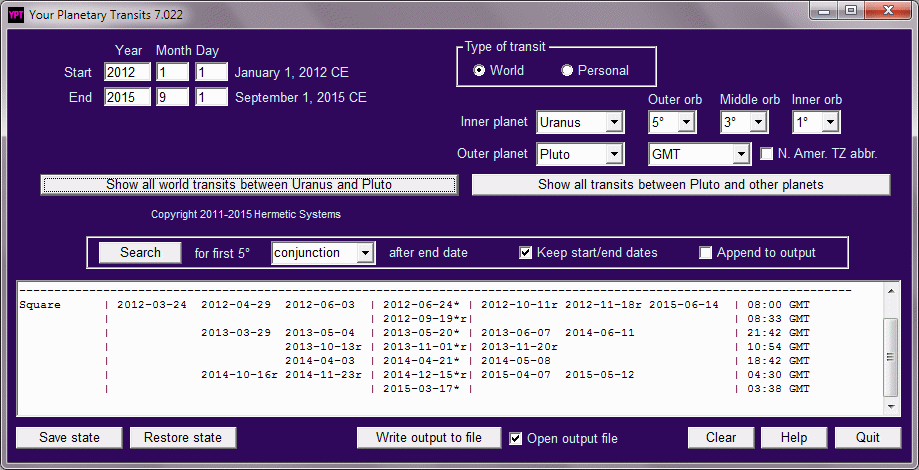Your Planetary Transits
Output of the Program |
| Back to Contents |

![]() Note that the size of the output textbox can be increased by dragging the bottom of the program window, as shown at left.
Note that the size of the output textbox can be increased by dragging the bottom of the program window, as shown at left.
Your Uranus return occurs when Uranus, in its orbit around the Sun, returns (after about 84 years) to the position in the zodiac (or rather, your preferred zodiac, tropical or sidereal) which it held in your natal chart, or in other words, when Uranus becomes conjunct with your natal Uranus. The screenshot below shows a transit table which includes the Uranus return (tropical zodiac) for C.G.Jung in 1957-1960 (during which time he worked on his semi-autobiographical Memories, Dreams, Reflections). Note that transiting Uranus forms an exact conjunction with his natal Uranus not just once but three times: September 23, 1958; January 23, 1959 (when it is retrograde); and July 9, 1959.

Transit tables were made (using an earlier version of this software) for the outer planets — Jupiter to Pluto — for the years 2000-2020, and these are given in Outer Planet Transit Tables. These provide starting and ending dates (and the date when a transit becomes exact or reaches a minimum) for all transits (for orb values of 5°, 10° and 15°) for the following pairs of planets:
| Next: How to Read Transit Tables | |
| Your Planetary Transits | Home Page |